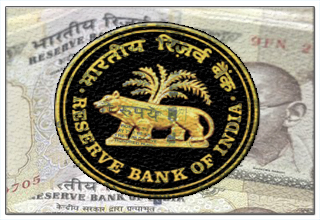Additional guidelines for interest rates on advances
Updated: Jan 20, 2015 01:59:44pm

The move comes after Reserve Bank Governor, Raghuram Rajan on January-15 cut the repo rate or the lending rate under the liquidity adjustment facility (LAF) by 25 basis points from 8.0 per cent to 7.75 per cent with immediate effect.
“Any such decision regarding change in spread on account of change in credit risk profile should be supported by a full-fledged risk profile review of the customer. The change in tenor premium should not be borrower specific or loan class specific. In other words, the change in tenor premium will be uniform for all types of loans for a given residual tenor,” the apex bank said in a notification.
This however is not applicable to loans under consortium/ multiple banking arrangements, RBI clarified.
It has also advised banks to have a Board approved policy delineating the components of spread charged to a customer. It should be ensured that any price differentiation is consistent with bank’s credit pricing policy.
Further, bank’s internal pricing policy must spell out the rationale for, and range of, the spread in the case of a given category of borrower, as also, the delegation of powers in respect of loan pricing. The rationale of the policy should be available for supervisory review.
The RBI notification also said that while computing Base Rate, banks will have the freedom to calculate cost of funds either on the basis of average cost of funds or on marginal cost of funds or any other methodology in vogue, which is reasonable and transparent provided it is consistent and made available for supervisory review/scrutiny as and when required. It is clarified here that where the card rate for deposits of one or more tenor is the basis, the deposits in the chosen tenor/s should have the largest share in the deposit base of the bank.
Further, as earlier, banks are required to review the Base Rate at least once in a quarter with the approval of the Board or the Asset Liability Management Committee (ALCO) as per the bank’s practice, it added.
In addition, with a view to providing banks greater operational flexibility, it has been decided to allow banks to review the Base Rate methodology after three years from date of its finalization instead of the current periodicity of five years. Accordingly, banks may change their Base Rate methodology after completion of prescribed period with the approval of their Board of Directors/ ALCO, it said.
Banks will, however, not be allowed to change their methodology during the review cycle.
The additional guidelines issued today are based on the recommendations of the Working Group on pricing of Credit, chaired by Anand Sinha.
The guidelines will come into effect one month from today, RBI said. (KNN/ES)











